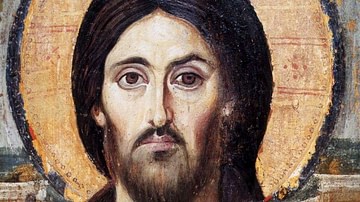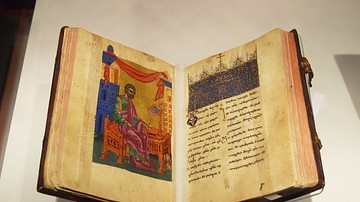Antisemitism is a modern term that describes prejudice and hostility to Jews and Judaism. The term is derived from the later social scientific categorization of the subfamily of the Afro-Asiatic languages of Hebrew, Aramaic, Arabic, and Amharic. It is also a descriptor of the peoples of these regions, from the list of nations descended from Noah's eldest son Shem, in Genesis 10. The most common use of antisemitism, however, relates to Jews and Judaism.

The modern anthropological and physiological categories that now define race did not exist in the ancient world. These elements were introduced into aspects of Christian antisemitism in the Middle Ages and during the Reformation. Political critique arose beginning with the 18th-century Zionist movement, which resulted in an independent nation of Israel. What became Christian antisemitism accrued over many centuries, but the basis for antisemitic views remains embedded in the story of a 1st-century itinerant Jewish preacher, Jesus of Nazareth, in the Roman province of Judea. His story was told in what became the gospels ("good news") of Mark, Matthew, Luke, and John.
Ancient Religions
Religion as a separate concept or category did not exist in the ancient world. Ancient peoples were defined by their ethnic groups (the Greek ethnos, "nations") who shared blood ties (genealogy), language, geography, myths, and rituals. Ancestral traditions were encoded in laws (covenants, contracts) for behavior, gender roles, and forms of government, and the balance between humans and the divine was maintained through prayers and rituals.
Jews were an ethnic group distinguished from their neighbors by two additional elements:
- Jews had separate identity markers: circumcision, dietary laws, and Sabbath observance.
- Jews were forbidden to worship other gods. However, ancient Jews were not monotheists in the modern sense.
Jews conceived of a hierarchy of powers in heaven, and the Jewish texts consistently refer to the existence of the gods of the nations, which were created by the God of Israel, who "presides in the great assembly; he renders judgment among the gods" (Psalm 8:21). The foundational story for the idea that Jews were monotheistic was when Moses received the commandments of God on Mt. Sinai. The first two of the Ten Commandments state:
I am the Lord your God… You shall have no other gods before me. You shall not make for yourself an image in the form of anything in heaven above or on the earth beneath or in the waters below. You shall not bow down to them or worship them. (Deuteronomy, 5:6-8)
Worship in the ancient world always meant sacrifices. Jews could pray to angels and other powers in heaven, but they were only to offer sacrifices (animals, vegetables, libations) to the God of Israel.
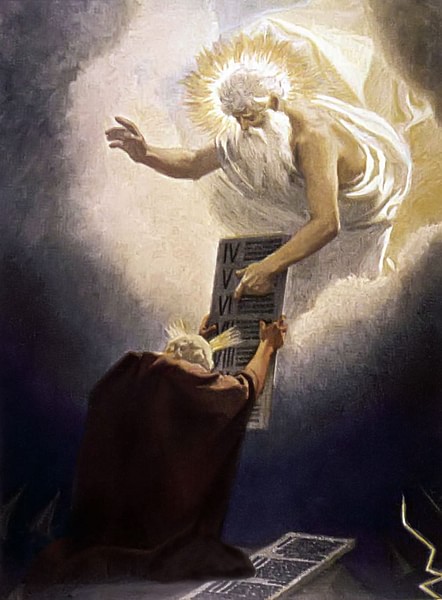
Before the emergence of Christianity, Gentiles (non-Jews) often criticized Jewish customs. Their refusal to participate in the hundreds of native religious sacrifices and festivals was deemed misanthropic, a dislike or hatred for the rest of humankind and for the welfare of the community. We describe this literature as "anti-Judaic," rather than antisemitic.
History of the Jews
In their long history, the Jews had suffered several national disasters, such as the conquest of the Northern Kingdom of Israel in 722 BCE and the conquest by the Babylonian Empire in 587 BCE. The Babylonians destroyed the First Temple of Solomon. When the Persian Achaemenid Empire arose, Jews who had been taken into captivity in Babylon were released by Cyrus the Great (d. 530 BCE) and returned to rebuild the Temple.
The prophets of Israel explained these disasters as God punishing Israel for lapsing into idolatry and neglecting of God's commandments. At the same time, they offered a message of hope that God would intervene in human history one more time, in the 'final days', and manifest his kingdom on earth, the original Garden of Eden. This would begin with his raising up a messiah (an "anointed one") from the line of King David. God would then restore the nation of Israel to its former glory.
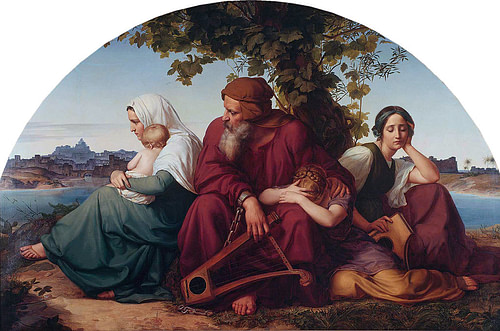
When Israel was conquered by the Seleucid Empire, Antiochus IV Epiphanes (r. 175-164 BCE) took the unprecedented step of forbidding the customs of the Jews and defiled the Temple in 167 BCE. Under the leadership of the Hasmonean family, the Maccabean Revolt expelled the Seleucids, but not all Jews agreed with the rule of the Hasmoneans, who combined the offices of the king with the high priest, and this period saw the emergence of Jewish sects.
The Essenes left Jerusalem and settled along the shores of the Dead Sea where they awaited God's intervention and produced the Dead Sea Scrolls. It is in this literature that we have a concept of the personification of evil in all others, including other Jews, who disagreed with their views. The Sadducees belonged to priestly houses and were in charge of maintaining the Temple. The Pharisees promoted the idea that all Jews should live according to priestly traditions in the book of Leviticus. The Zealots claimed that only God should be their king. The nature of these sectarian groups was that they all criticized everyone else who did not agree with their particular views, but no one sect had authority over any other group.
Historical Context of the Gospels
In 63 BCE, Rome conquered Jerusalem under Pompey the Great (106-48 BCE), who installed the Herodians as client-kings. After a series of inept and corrupt Roman governors in the 1st century CE, the Great Jewish Revolt of 66 CE broke out, which led to the destruction of the Second Temple in 70 CE. This is the context for the gospels, beginning with Mark.
In the 20s-30s CE, an itinerant Jewish preacher, Jesus of Nazareth, began proclaiming that the "kingdom of God" as predicted by the prophets was imminent. Quotes and allusions to Jewish history, the Law of Moses, and the prophets validated the claims concerning Jesus. Those who followed his teachings became one more sect of Jewish believers.
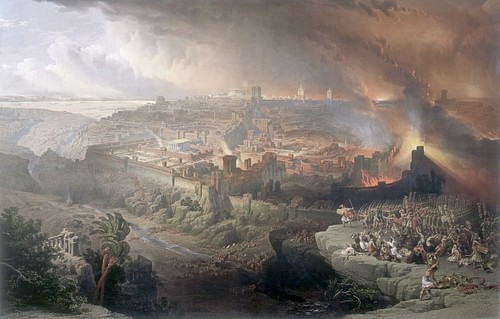
The Gospel of Mark was written about a generation after the death of the historical Jesus, followed by Matthew, Luke, and finally John. These are not four independent sources, and we have no written eyewitness testimony for these events; no contemporary records have survived. Jesus left no writings, and the gospels were not written by the disciples of Jesus.
Mark had to address three major problems:
- Jesus' role as the messiah did not result in the restoration of the nation of Israel; the Jews still suffered under Roman occupation.
- By the time Mark wrote, there were more Gentiles (ex-pagans) in the movement than Jews.
- Jesus died by crucifixion, the Roman punishment for treason.
The first problem was rationalized by an early concept known as the parousia ("second appearance"). Jesus had been resurrected from the dead and exalted to heaven, but he would return to earth at a future time. The second problem was addressed in Mark 4:10-11. When the disciples asked Jesus why he taught in parables, he told them:
The secret of the kingdom of God has been given to you. But to those on the outside everything is said in parables so that, 'they may be ever seeing but never perceiving, and ever hearing but never understanding; otherwise they might turn and be forgiven!'"
This was a line from the prophet Isaiah, who had castigated the Jews for their lapses into sin. In other words, it was Jesus himself, fulfilling Isaiah, who kept the majority of Jews from believing. For most Jews, the messiah, a descendant of King David, was to manifest the qualities of David, a warrior-king, eliminating the enemies of the nation. A messiah who was tortured and then died would be of little help to the Jewish cause. An early Christian claimed that, in fact, the Scriptures did predict this type of messiah in Isaiah 49-53, a collection of oracles known as "the suffering servant passages." The "suffering servant" was persecuted and tortured, died, and then resurrected from the dead and placed next to God on his throne. In the historical context of Isaiah, the "servant" represented the suffering nation of Israel, but Christians now claimed that Isaiah was predicting Jesus of Nazareth.
The death by crucifixion was addressed in Mark's story of the false trials of the Jewish leadership that led to the death of Jesus. Mark was compelled to distinguish his Jews from those of the recent revolt; despite the fact of crucifixion, Jesus was not a traitor to Rome. By implication, his followers are not guilty of treason either. Mark created the template that Jesus died because of religious differences among the Jews and not because of the politics of the empire.
Jewish Sects & Conflicts
Mark claimed that from the very beginning of the ministry, Jesus was harassed and persecuted. He established this with a pattern of 'conflict dialogues' between Jesus and the Pharisees, who accused him of violating the Law of Moses. We cannot verify the actual conversations in these stories, but they are credible in the sense that Jewish sects were noteworthy for debates among each group. The Pharisees in the gospels became the foil by which to illuminate the teachings of Jesus.
All writers in the ancient world utilized literary devices such as the polemic, a written or verbal attack used to distinguish one's views from others or the views of a group from the dominant culture. All the gospels polemically charged the Pharisees with oppressing the people and keeping salvation from everyone. Jews, however, did not conceptualize 'salvation' in the same way that became a Christian tenet. Rather, the focus was on the predicted restoration of the glory of the nation of Israel. The claim that the death of Christ served as an atoning sacrifice, for the forgiveness of sin, was first articulated in Paul's letter to the Romans (c. 50-60 CE). The Pharisees were accused of deliberately withholding a concept that they did not have.
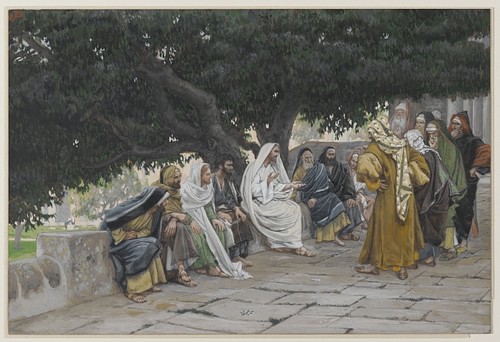
Later Christian narratives claim that the Pharisees had strict rules and rituals, but we lack 1st-century evidence; no writings of a Pharisee have survived, with the exception of Paul the Apostle, who became a believer in early Christianity. Narratively, the gospels looked back to the earlier period of the ministry of Jesus. However, the polemical criticism of the Temple cult was no longer viable at the time of their writing.
In the gospels, Pharisees consistently accused Jesus of dining with tax collectors and sinners. The traditional assumption is that the 'tax collectors' may have been Gentiles (violating dietary laws) and that the 'sinners' were prostitutes. However, this behavior did not violate any ritual purity rules of Leviticus. Jews and Gentiles dined together throughout the Empire, and prostitution in the ancient Mediterranean was not a sin.
The most significant disjoint in the gospels is that the Pharisees' charges against Jesus did not violate the Law of Moses. It was not a sin to claim to be the messiah. From the writings of the Jewish historian Flavius Josephus (36-100 CE), we have stories of numerous messianic figures in the 1st century who periodically roused the crowds and caused disturbances at Jewish festivals and called upon God to manifest his kingdom now. None of these people were executed by Jews but by Rome. The Roman army rounded up the leader and his followers and executed them by crucifixion. There was only one kingdom: Rome.
The Temple Incident
After entering Jerusalem for the festival of Passover, Jesus entered the Temple area:
[He] began driving out those who were buying and selling there. He overturned the tables of the money changers and the benches of those selling doves, and would not allow anyone to carry merchandise through the temple courts. And as he taught them, he said, "Is it not written: 'My house will be called a house of prayer for all nations'? But you have made it ‘a den of robbers.'" (Mark 11:15-17)
This is an incredibly powerful scene in Mark that remains a fundamental element in Jewish-Christian relations. For Christians, it summarized what was wrong with Judaism. It is important in Mark's narrative because he claimed that it was this incident that led to the trial and crucifixion of Jesus of Nazareth. It is also the rationale for Mark's claim that such corruption led to the eventual destruction of the Temple by Rome.
Temples owned farms outside the cities for raising sacrificial animals, but the Jews had a requirement that they be without blemish. The southern end of the Temple Mount had an area known as Solomon's Porch, an arcade structure where animals could be purchased, a convenience for pilgrims who would not risk 'blemish' by dragging animals long distances. This area was next to the court of the Gentiles, as non-Jews could and did make sacrifices at the Temple. Where this temple differed from others was the presence of the money-changers. As Jews banned images, coins that carried images of gods and emperors had to be exchanged for Jewish coins. At the same time, Jewish men contributed a half-shekel Temple tax each year for the upkeep of the Temple. This could only be paid in a specific kind of half-shekel available at the entrance.
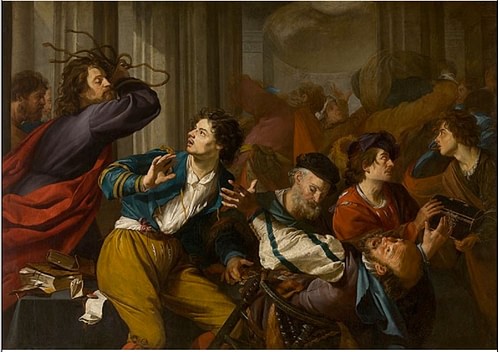
We have no absolute evidence that either the animal-sellers or the money-changers were cheating people. In Mark, Jesus' quote was combined from both Isaiah and Jeremiah. However, thieves do not steal from each other in their den. Rather, a "den of robbers" is a safe haven where they distribute their loot away from the authorities. Both Isaiah and Jeremiah criticized Jews for the assumption that the Temple was a safe haven where they could perform the sacrifices, thinking that would save them from the coming judgment without true repentance, but neither ever suggested that the sacrifices and rituals should cease.
The Temple Incident became the premiere text to validate the Christian claim that both Judaism and the Temple were so corrupt that God had to send Jesus into the world to create a new religion. In the later Middle Ages, this passage was also the basis to charge contemporary Jews with the sin of usury and the love of money.
There are many historical problems in the trial(s) and crucifixion in the gospels. Mark's claim was that Jesus' trial by the Jews was illegal (the witnesses did not agree) and was motivated by the Jews' hatred of him from the very beginning. The trial before Pontius Pilate portrayed his reluctance to condemn Jesus because he found him innocent. Having a Roman magistrate declare this removed any charge of treason by his followers. Another disjoint in Mark's narrative is that Mark never explained why the Jews, who three days earlier had welcomed Jesus into the city as their deliverer, now turned against him and encouraged Pilate to crucify him.
The Roots of Antisemitism
The destruction of the Temple effectively eliminated the various Jewish sects. The remnants of the Pharisees were most likely the men who established what became Rabbinic Judaism in Galilee. Without the Temple sacrifices, the Torah became the focus of Jewish life.
A few decades later, the gospels of Matthew and Luke replicated the charges against the Pharisees in Mark with added details and increased vitriol. In Luke's sequel to his gospel, The Acts of the Apostles, he claimed that Paul the Pharisee obtained arrest warrants from the high priest for the believers in Damascus. This is another literary device, a hyperbole ("overreaching") on the part of Luke; the high priest had no authority outside of Jerusalem. After relating Paul's conversion on the road to Damascus, the second half of Acts narrated the journeys of Paul. Paul was always welcomed by Gentiles but always and everywhere persecuted by the Jews.
The first three gospels blame the Jewish leadership, but the Gospel of John extended this blame to the "the Jews," a phrase that occurs 73 times in the text. It is in John that Jewish characteristics became standard iconography in Christian antisemitism. When some Jews were contemplating their descent from Abraham and that they follow the works of God, their father, John's Jesus responded:
You are doing the works of your own father. ... You belong to your father, the devil, and you want to carry out your father’s desires. He was a murderer from the beginning, not holding to the truth, for there is no truth in him. When he lies, he speaks his native language, for he is a liar and the father of lies. ... Whoever belongs to God hears what God says. The reason you do not hear is that you do not belong to God. (John 8:41-47)
Over the next few decades, during the separation of Christianity from Judaism, the followers of Jesus attempted to create their own identity. Jews presented a challenge to Christian 'truth.' In addition to the gospels, New Testament texts and letters utilized the argument that only Christians had the correct interpretation of the Jewish Scriptures and therefore belonged to them. By the 2nd century, the vitriol increased as the Church Fathers utilized the gospel material to demonize the Jews as agents of the Devil. With Christian worship of Jesus as a god, deicide became a charge against all Jews. Throughout the Middle Ages and beyond, Christians justified the murder of Jews by consistently aligning contemporary Jews with the Pharisees in the gospels.
Christian antisemitism remains a unique phenomenon in modern culture. The New Testament theologian and scholar, John Dominic Crossan, has claimed that blaming the Jews for the death of Jesus is "the longest lie" in history.



